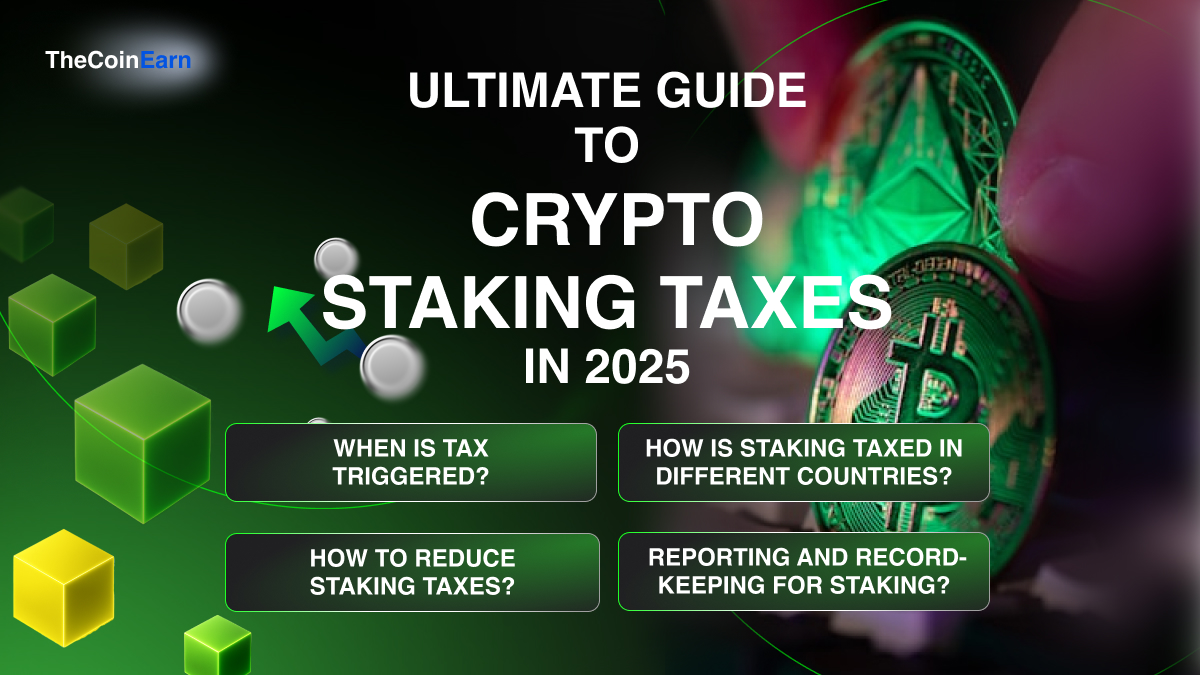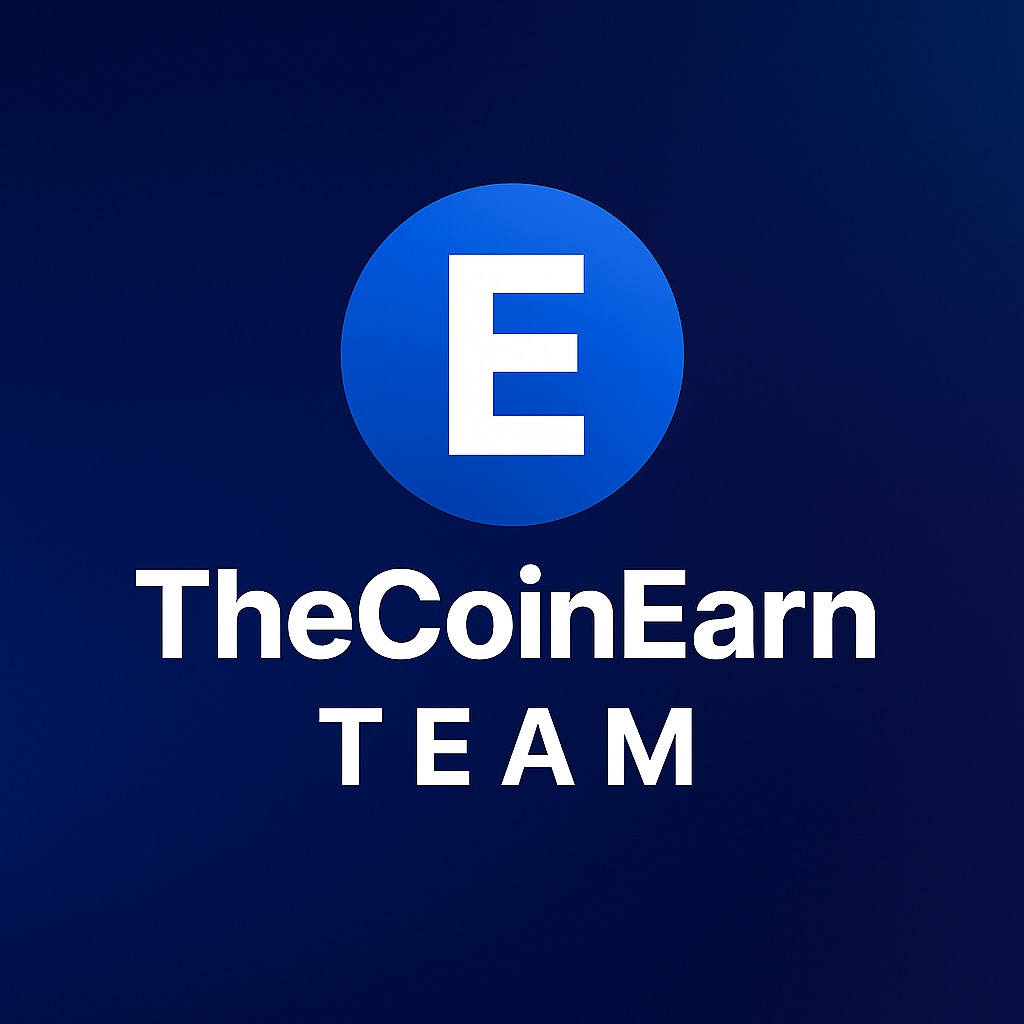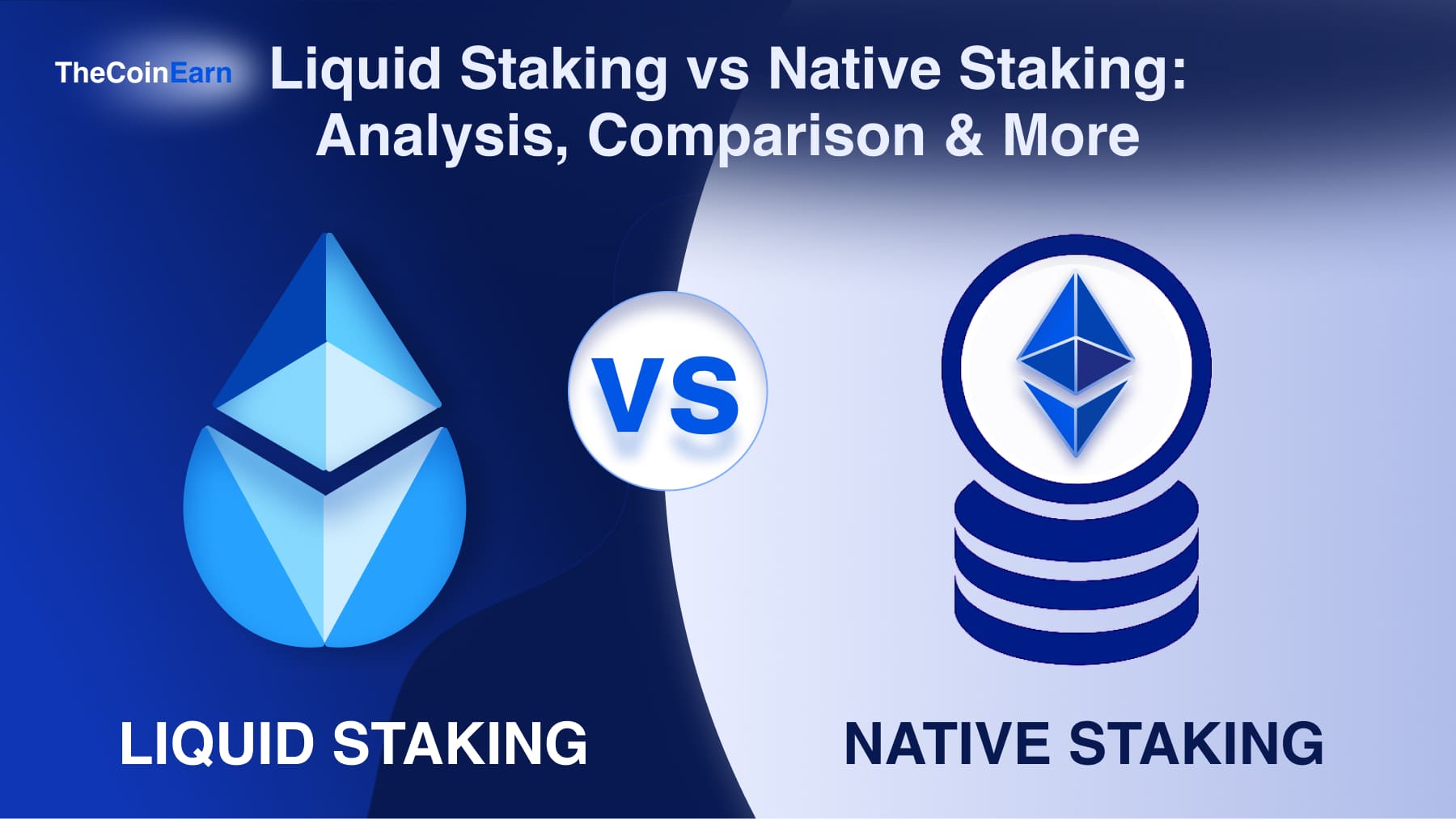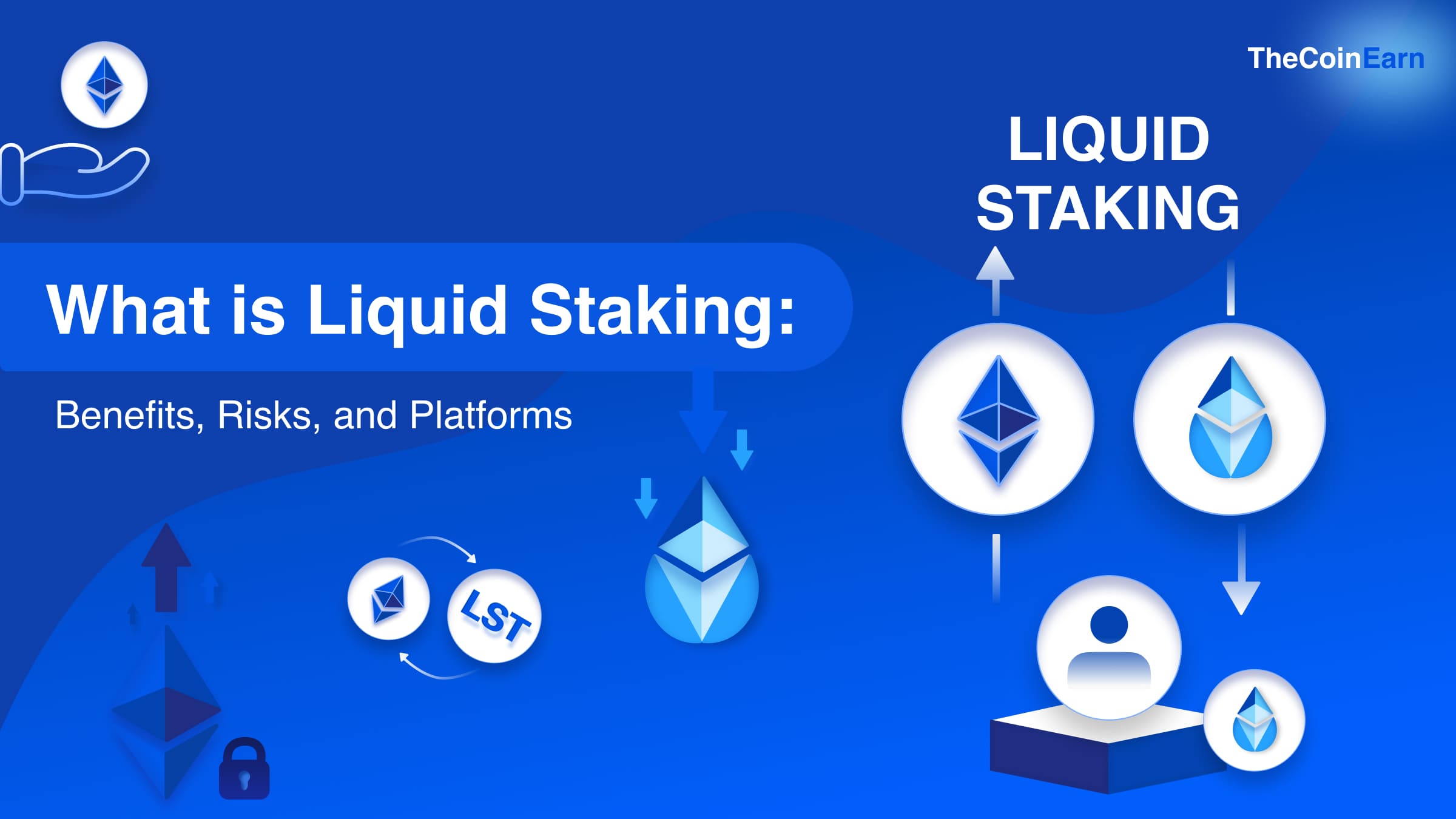What is NFT Staking? Top things you should know in 2023
As the NFT landscape continues to expand, a novel concept has emerged - NFT staking. This innovative approach allows NFT holders to not only own unique digital assets but also earn passive income and rewards. In this article, we delve into the world of NFT staking in 2023, uncovering its intricacies, benefits, risks, and the platforms that empower you to harness the potential of your NFT investments. Whether you're a seasoned crypto enthusiast or a curious newcomer, join us as we explore the exciting possibilities that NFT staking offers in the ever-evolving cryptocurrency ecosystem.
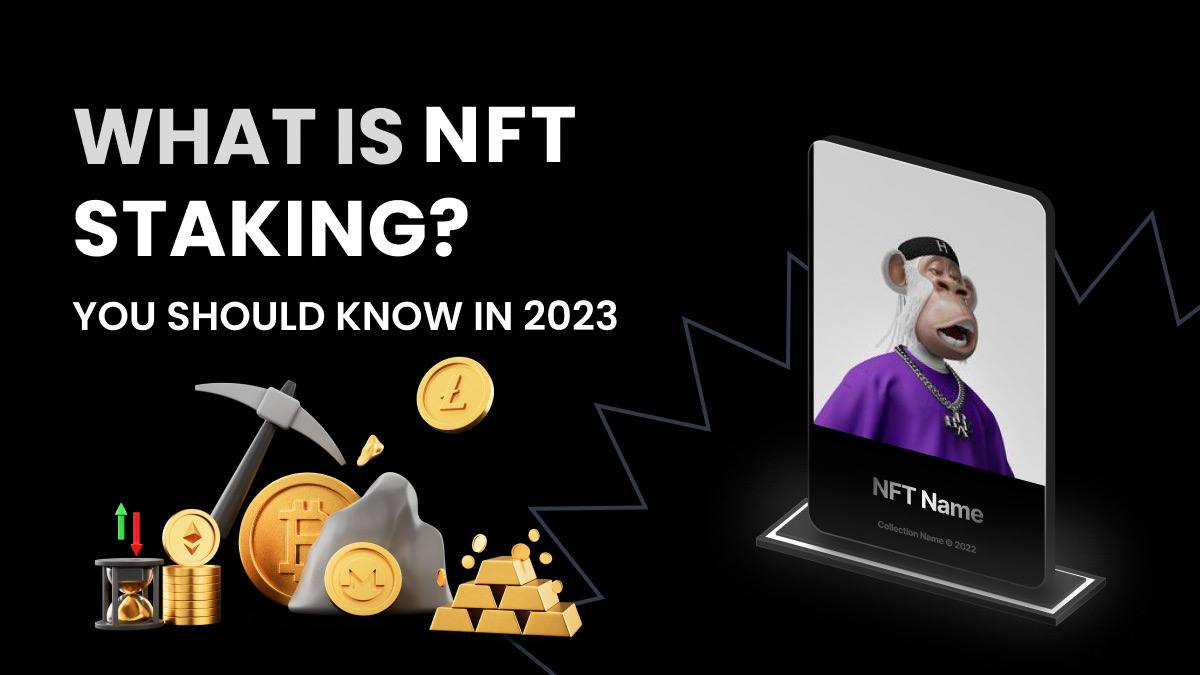
In 2021, the concept of NFT captured the attention of everyone who has ever experienced the cryptocurrency industry, globally or superficially. As the popularity of non-fungible tokens (NFTs) continues to skyrocket, innovative methods such as NFT staking are emerging, providing holders with exciting opportunities and rewards. NFT staking offers a novel avenue for creators, collectors, and enthusiasts to go beyond mere ownership and actively engage in decentralized ecosystems. By staking their NFTs, participants can earn rewards, shape governance, and contribute to the sustainability of the NFT marketplace.
Today, we'll take a look at what NFT staking is, explore its benefits and potential risks, and provide a number of factors to consider when staking your NFTs. We'll also help you choose the right platform and calculate the rewards you can get from it. So, keep reading and be vigilant not to miss anything.
What is Staking NFT: Understanding the Concept
Before we dive into NFT staking meaning, it's crucial to grasp the concept of non-fungible tokens.
What is NFT?
NFT stands for non-fungible token. It is a type of digital asset based on blockchain technology - the same technology that underpins cryptocurrencies such as Bitcoin and Ethereum. NFTs are unique and non-tokenized digital objects that can be virtual items, artwork, music, videos, etc. Unlike cryptocurrencies, which are identical to each other and can be exchanged on a one-for-one basis (i.e., fungible), NFTs are unique (i.e., non-fungible) digital objects that can be virtual items, artwork, music, memes, videos, etc. Think of them as digital collectibles, each holding unique properties, value, and the essence of rarity. They make digital artwork or other forms of content one-of-a-kind and verifiable, providing a powerful tool against digital fraud and duplication.
The beauty of NFTs lies in their ability to tokenize virtually anything digital. For example, digital artist Mike Winkelmann, also known as Beeple, sold purely digital artwork as an NFT for an astonishing $69 million at Christie's auction house. The artwork was verified, unique, and couldn't be duplicated, thus giving it incredible value. This extended functionality of blockchain is opening doors to new markets and opportunities in the digital world.
It is precisely because of their potential to revolutionize the art collecting industry that NFTs continue to create such excitement and anticipation around the world. As with Beeple, many NFTs that have become famous are inextricably linked to the art world.
However, the possibilities of NFTs go far beyond that. In recent years, the hype surrounding these non-fungible tokens has been associated with so-called GameFi projects and blockchain games based on the "play and earn" principle. Cryptocurrency games for money use NFTs to grant players ownership of virtual items they collect in a verifiable game. If you're a fan of these games, you've probably heard of Gods Unchained and Illuvium.
So why doesn't everyone own an NFT? Well, the fact is that the acquisition and storage of NFTs is not without certain restrictions. The process of mining, buying, and selling NFTs can be resource-intensive and involve high transaction fees, especially on the Ethereum blockchain. In addition, there remains some uncertainty as to whether the value of NFTs will increase over time. But, no doubt, this is also a factor that keeps everyone on their toes when it comes to NFT.
Now let’s go further and find the answer to “What does staking an NFT mean and how does it work?”.
NFT Staking Explained
NFT staking is a fascinating new approach within the realm of cryptocurrency, and it is shaking up the way we think about digital asset ownership. Essentially, staking NFTs allows owners of non-fungible tokens (NFTs) to participate in the crypto ecosystem to earn rewards in a passive income format.
You can think of NFT staking as a digital safe deposit box. The foundational idea is borrowed from traditional staking in the blockchain world. Staking involves locking up your crypto tokens in a network for a period of time to contribute to its operations like validating transactions, securing the network, or maintaining liquidity. In exchange, you receive passive income in the form of rewards. Similarly, when you stake an NFT, it's like you're depositing it into a digital safe, where it can earn you lucrative rewards. The most important thing is that you remain the owner of your NFTs.
This method of staking can also be compared to DeFi (decentralized finance) yield farming. In DeFi, you lend or provide cryptocurrencies to liquidity providers and earn rewards in the form of interest or transaction fees paid by other users. It's like earning interest from a bank but without any intermediaries involved. NFT staking is a part of the decentralized finance realm, while traditional banking is centralized.
How Does Staking NFT Work?
While researching the topic of NFT staking, our team realized that it is impossible to fully understand what NFT staking means without disclosing how it works. So, let's find out how you can earn passive income with your NFTs.
Staking NFTs is an exciting and dynamic feature in the universe of blockchain technology and cryptocurrencies, introducing a vibrant method for users to generate benefits from their non-fungible tokens. The process of staking NFTs fundamentally consists of investors locking up their tokens in a platform or project for a specified duration, with hopes of yielding rewards.
To begin staking NFTs, you first need to own some. You also need a crypto wallet to stake your NFTs for passive income. After acquiring your preferred NFTs, you can commit or "stake" them onto a blockchain-based platform that supports this function. This procedure often involves transferring your NFTs to a specific smart contract, where they will "sit," relatively safe and secure, for a set period. During this timeframe, your tokens are not available for other operations - like selling or transferring to another wallet.
As these NFTs are staked in the digital ecosystem, they steadily amass a type of return, mostly in the form of a platform's native token. Essentially, by staking your NFTs, you can have your digital assets working for you, generating income while they are locked away. When the staking period comes to an end, not only do you get your original NFTs back, but you also walk away with extra tokens as your reward.
It Is Important to Know
Remember, that staking rewards can vary based on the staking platform and the specific NFT collection. Each unique NFT offers different staking rewards, but not all NFTs are eligible for staking. The project team decides the staking capabilities when the NFT is created, ensuring a personalized experience. Besides, keep in mind that each of your NFTs may have unique requirements, so check the rules of the platform you have chosen for the process before staking.
NFT Staking Rewards
The rewards NFT holders receive for staking their collections depend on the specific platform and the type of NFTs they stake. While most platforms offering NFT staking provide daily or weekly rewards, the types of rewards can vary widely.
Typically, NFT staking rewards are distributed in the form of the platform's native utility token, which can be listed on exchanges and traded for other cryptocurrencies or fiat currencies. However, some NFT staking projects go beyond this and offer additional incentives to encourage staking.
One notable feature found in certain staking platforms is the presence of decentralized autonomous organizations (DAOs). Through these DAOs, NFT holders can lock up their assets in a shared pool, granting them the opportunity to actively participate in the platform's governance. This includes the ability to vote on future proposals, allowing them to have a meaningful impact on the project's development and decision-making process.
Moreover, certain projects reward their NFT holders with free NFTs from upcoming collections or provide them with access to exclusive whitelists, enabling them to purchase future NFTs at a discounted price.
By summing, the variety and potential of staking rewards depend on the platform and the NFT type, making it crucial for NFT holders to explore different options to find the most suitable and rewarding staking opportunities. The specific rewards and incentives provided can be diverse, ranging from native tokens to participation in governance activities, airdrops of other cryptocurrencies, and access to exclusive NFT collections.
How to Calculate NFT Staking Rewards?
NFT rewards are calculated based on a variety of factors that could include the uniqueness of the token, the transaction volume of the NFT marketplace, and the assigned value of the digital assets by their creators.
- The first factor, the uniqueness of the token, refers to the fact that each NFT carries distinguishing information that makes it distinct from any other token, thus contributing to its potential value and rewards. Higher uniqueness often translates into higher value and potential to earn rewards.
- The second factor in the calculation of NFT staking rewards is the transaction volume of the NFT marketplace. In other words, the more successful an NFT marketplace is in terms of the volume of transactions, the higher the chances that NFT holders on that platform will receive attractive rewards.
- The final factor is the value assigned to digital assets, which depends on the creators of NFTs. Higher-value assets often yield more substantial rewards, given their high demand and market value.
Calculate your NFT Staking Rewards with APY
Analogous to stakable cryptocurrencies, the majority of NFT ventures provide staking advantages in the form of Annual Percentage Yield (APY).
The incentive rates for a plethora of NFT initiatives scale with the duration of your NFT's lock-in period. Consequently, NFT proprietors are motivated to stake their belongings for the maximum viable duration.
Different platforms could project your anticipated return in the guise of tokens instead of an APY. This may be exemplified by receiving 20 of a platform’s proprietary tokens for each day your NFT is staked.
Learn more about APY in crypto.
The Pros and Cons of NFT Staking
Want to know more about what it means to stake an NFT? So, it’s time to explore the main pros and cons of this process.
The Benefits of Staking NFT
NFT staking offers several enticing benefits for investors looking to maximize their digital asset holdings.
- First and foremost, staking provides a passive income stream, enabling investors to earn rewards without actively trading or selling their NFTs. This creates a more sustainable investment strategy, especially in volatile markets where holding assets for the long term can be advantageous.
- The next great thing about NFT staking is that while your NFTs are staked, you effectively still retain ownership and the rights that come with them. This means you can claim any additional rewards or benefits granted to your NFT.
- Additionally, some DeFi protocols give governance rights to stakeholders. This means you could potentially play a part in making decisions about the future of the protocol.
- Some platforms or artists could offer exclusive content or benefits to those who stake their NFTs. This could range from early access to new releases, special editions, or even physical goodies.
- Finally, staking NFTs can enhance the potential returns on investment. As the popularity and demand for NFTs grow, the value of staked tokens can appreciate, offering investors both capital appreciation and the rewards earned through staking. By leveraging the power of NFT staking, investors can potentially increase their overall portfolio value while enjoying a consistent passive income.
The Risks of Staking NFT
Now, let’s come up with the risks you can face when deciding to stake your NFT.
- Bugs in smart contracts: Smart contracts are essentially pieces of code that automatically execute transactions when certain conditions are met. In fact, smart contracts power the staking mechanism. A hidden bug in the code may cause transactions to execute incorrectly, potentially leading to fund loss.
- Issues of liquidity: Some platforms may not provide enough liquidity, which may make the buying or selling of NFTs a challenge due to the potential of impacting market price.
- Security breaches: While staking NFTs, you're relying on the platform's security. If they experience a breach, your staked NFTs could be at risk.
- Changes in regulation: The legal framework for cryptocurrencies and NFTs remains under development, with regulations potentially changing. These changes could affect your investment negatively.
- Volatile market: NFT values can change very dynamically. A market crash could lead to NFTs valued less than the purchase price.
- Failure in project execution: The early stages of blockchain and DeFi projects often involve significant risks and uncertainties. Any failure in delivering promises, mismanagement of funds, or other internal issues could influence the value of your staked NFTs negatively.
- Exposure to impermanent loss: This is a phenomenon where the value of your staked tokens decreases compared to just holding them. It's often a risk in DeFi protocols where you provide liquidity.
- Dependence on single project success: Staking NFTs makes you reliant on the success of a single project or platform. If it fails, your investment is likely to suffer.
While the benefits of NFT staking obviously outweigh the cons, there are still significant risks that should be considered before deciding to invest in NFTs to earn passive income. Our advice is to carefully select a platform and analyze your NFTs to get the most out of your investment.
Best NFT Staking Platforms
Now that we've got the question “What does staking NFT mean”, let's take a look at a few platforms where you can stake your NFTs.
Binance NFT PowerStation
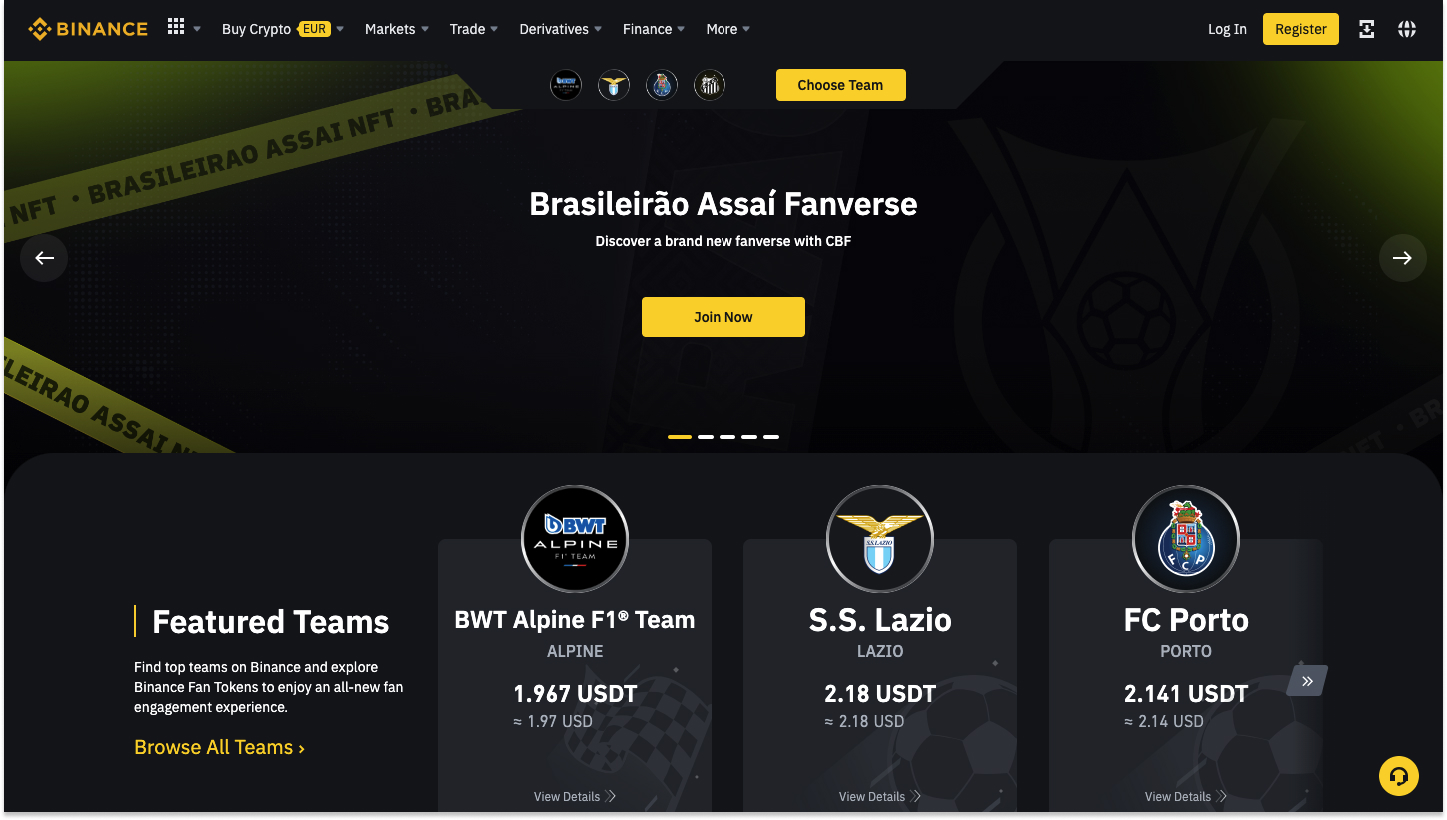
Binance NFT PowerStation is a platform developed by Binance, one of the largest cryptocurrency exchanges in the world. It is designed to facilitate the creation, trading, and minting of non-fungible tokens (NFTs), as well as provide staking opportunities.
The Binance NFT PowerStation provides artists and creators with a user-friendly interface for tokenizing their artwork, music, videos, and other digital assets. It also offers various tools and resources to help creators showcase and promote their NFTs in the Binance ecosystem.
This NFT staking platform will be especially interesting for sports fans. Here, you can earn money by supporting your favorite sports teams. Are you familiar with Binance Fan Token? These are utility tokens that are associated with a specific sports team. With this token, token holders can enjoy various privileges. For example, as a token holder, you can benefit from priority ticket sales or have a say in important decisions within the sports club. By deploying your NFTs, you can earn additional Binance Fan Tokens.
Users can also buy, sell, and exchange NFTs on the Binance NFT Marketplace, which is part of the PowerStation.
MOBOX (MBOX)
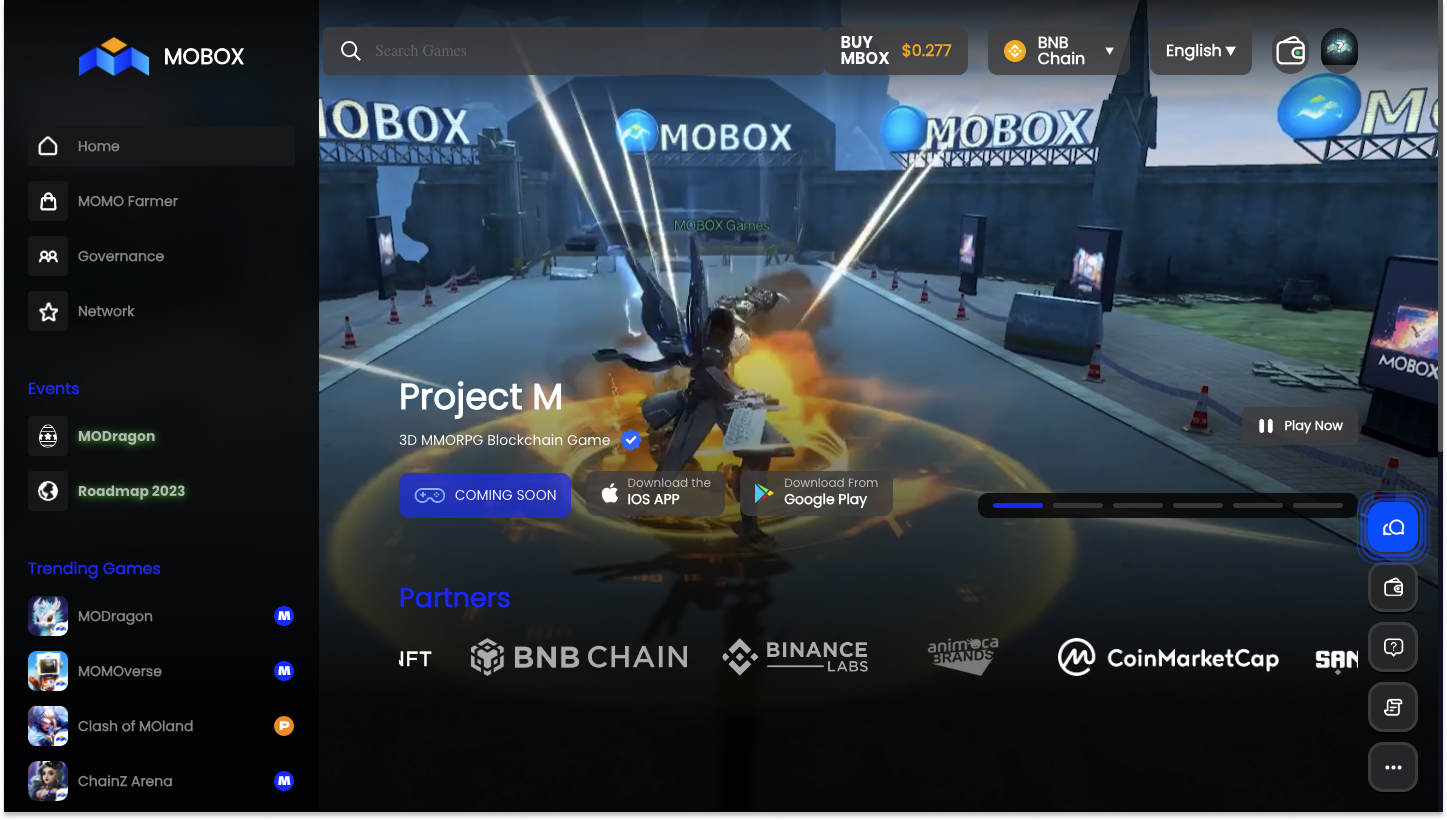
Let's take a look at another NFT staking platform known as MOBOX, which is a blockchain-based game. MOBOX boasts an exciting metaverse called the MOMOverse, housing a diverse collection of NFTs. These NFTs can be freely traded on MOBOX's marketplace, but there's also an enticing option to stake them and generate a passive income. Each MOMO possesses unique qualities, with its hashing power generated randomly.
By staking your MOMO, you become eligible to receive MOBOX's governance tokens as staking rewards. The reward amount is determined by the number of MOMOs you choose to stake. Since MOMOs vary in rarity, their hashing power differs, subsequently impacting the staking rewards you can earn. It's worth noting that MOBOX is just one example among many others in the NFT gaming space. Prominent NFT games like Splinterlands and Axie Infinity also provide similar staking services to NFT holders.
NFTX
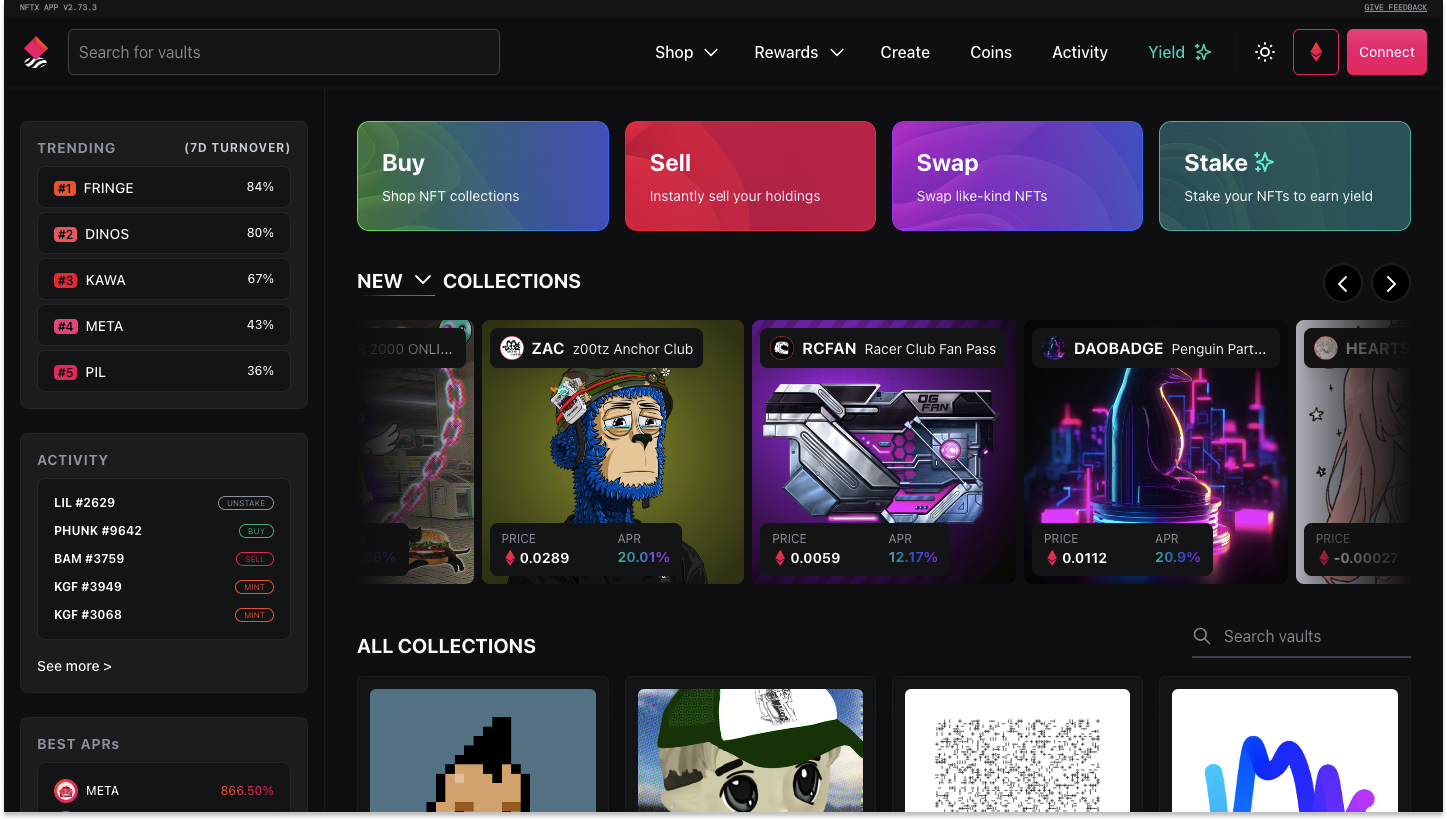
NFTX is an NFT staking platform built on Ethereum that allows for the creation of ERC20 tokens backed by non-fungible tokens (NFTs). In essence, it allows users to pool NFTs together and create an ERC20 fund, or index fund, providing liquidity to illiquid NFT assets. This platform allows you to buy, sell, stake, and swap your NFTs.
The primary goal of NFTX staking platform is to enable better liquidity for high-value NFTs. Essentially, through NFTX, owners of NFTs can turn their assets into fungible ERC20 tokens (also knowns as vTokens) that can be traded on any decentralized exchange. Holders can stake their vTokens, earning attractive yield rewards or utilizing them to acquire specific NFTs from the vault.
The NFTX staking platform provides a two-sided system: One where users can mint and redeem NFT-backed tokens and the other where users can buy and sell these tokens. As a result, NFTs can be treated more like traditional tokens due to increased liquidity. This makes the NFT market more accessible and flexible for users.
It is important to note that by staking an NFT, the owner willingly surrenders direct ownership of the individual NFT staked. In this process, if a rare NFT is staked on NFTX, the user may receive a different NFT when attempting to redeem their original NFT. As such, NFT staking on NFTX is ideally suited for NFTs with common characteristics rather than exceedingly rare and unique ones.
Splinterlands
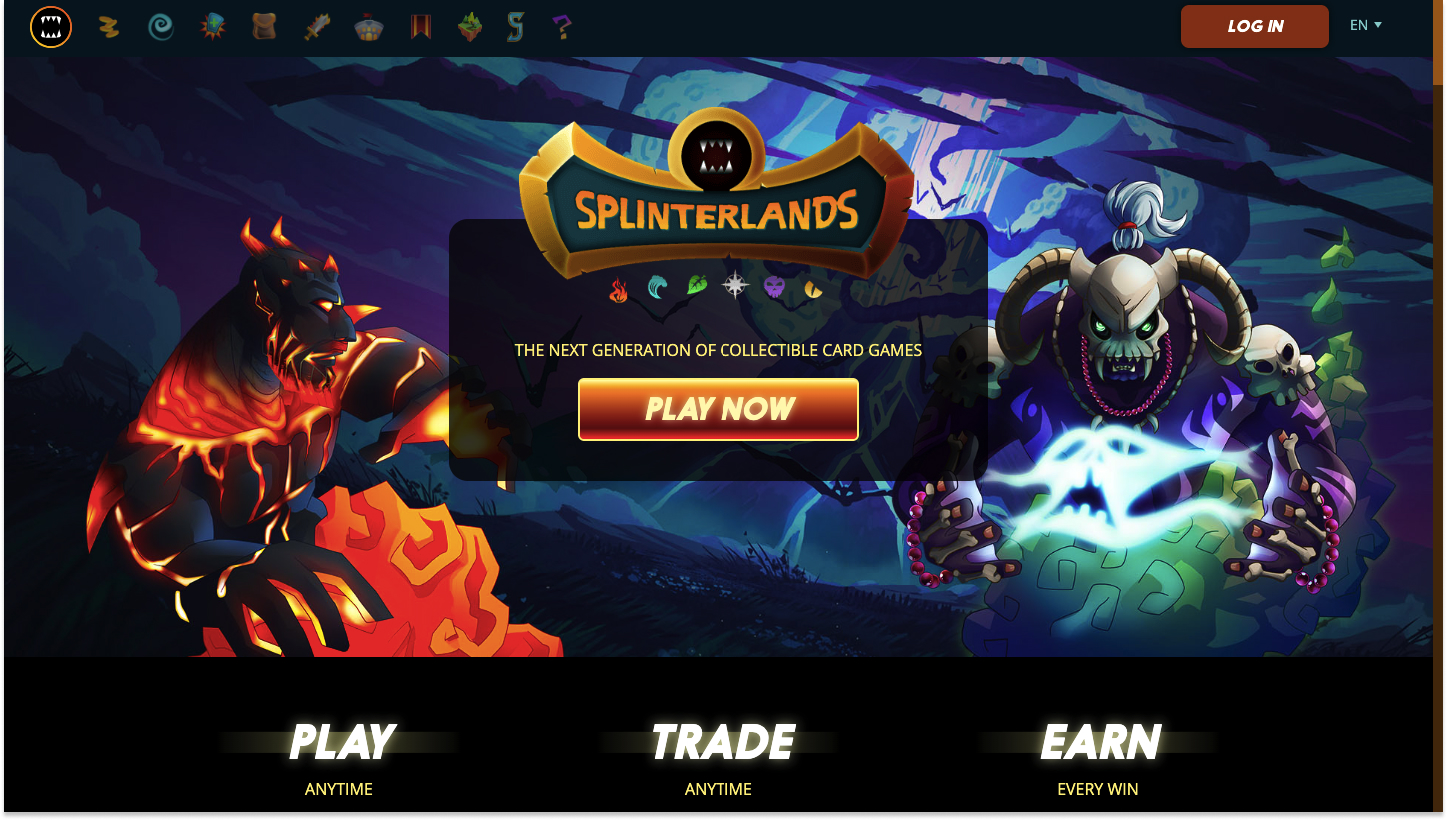
Splinterlands stands as a blockchain-driven collectible card game. Within this gaming realm, players amass a diverse array of cards, each boasting unique abilities, and statistics, which they employ in thrilling matches.
At the core of this gaming ecosystem lies the native coin called SPS, which operates as a decentralized autonomous organization (DAO) running on the Binance Smart Chain (BSC). Players have the option to stake their SPS tokens on participants engaging in ranked battles, liquidity pools, and the DAO governance voting pool.
Staking NFTs isn’t just about immediate gain; it's a strategy that requires careful planning, predictive analysis, and the perfect platform to amplify the rewards. While the above-mentioned platforms lead the market in 2023, some other NFT staking projects that may be useful for you are Mutant Labs, Metroverse, and OpenSea.
So, Whether NFT Staking Worth It?
There are so many questions related to the world of NFTs that it is not surprising if you are still in doubt about whether you should invest in it. Well, if you ask our experienced team, the answer is Yes. Although NFT staking is a relatively new phenomenon and not as widespread in cryptocurrency staking, its growth prospects are very high, especially with Ethereum's transition from the Proof-of-Work (PoW) mechanism to the Proof-of-Stake (PoS) mechanism, which supports NFT staking. Also, the benefits that staking NFT provides to owners are obvious, including the ability to receive rewards without selling or transferring ownership of their NFT collections.
Today, we have told you everything you need to know about NFT staking, and it's up to you to decide. In conclusion, here are some important factors to consider before staking your NFTs.
What Should You Consider When Staking Your NFTs?
Value of the NFT: The first factor to consider is the inherent value of your NFT. This doesn't mean just the price you paid for it, but the inherent, subjective value it possesses. Are you holding onto a rare digital painting from a well-respected virtual artist? Or perhaps, a digital concert ticket from a famous musician's first online concert? Higher-value NFTs could yield higher returns, but remember, there's likely more competition!
Staking Platform: Next, choose your NFT staking project or platform wisely. Different platforms offer varied staking services, each with unique perks and potential risks. Look for established, trustworthy platforms with transparent terms, high security, and proactive customer service.
Risk Tolerance: Understand that staking NFTs involves risk. Just like traditional investing, staking requires you to balance potential profits against potential losses. If your NFT loses value or the staking platform experiences issues, you could face a loss. Always assess your willingness to take risks before diving into the NFT staking pool.
Rewards Distribution: One compelling reason to stake NFTs is the prospect of earning rewards. Rewards typically exist in the form of cryptocurrencies and vary across platforms. Check the frequency and terms of rewards distribution. Some platforms might offer higher rewards but also carry higher risks.
Smart Contract Knowledge: The world of NFTs is rooted in blockchain, and therefore, depends on smart contracts. Take time to understand how smart contracts work, especially those that govern your preferred staking platform. Ensure these contracts are secure, transparent and decentralized.
Community Support: Last but not least, consider the strength and responsiveness of the platform's community and support systems. A vibrant community contributes to problem-solving, helps in decision-making, and enriches your overall NFT journey.
The digital world spins fast, and in the middle of all this, NFTs are blazing their trail with opportunities galore. Staking provides a way to maximize your NFT investments but remember, it's necessary to consider these factors and conduct a thorough analysis before taking the plunge. You're not just investing, you're revolutionizing the future of art and ownership – now that's an exciting prospect!
Conclusion
NFT staking presents an exciting and evolving landscape within the cryptocurrency world. As the ecosystem continues to develop and new projects emerge, the potential for generating passive income and benefiting from exclusive NFT ownership becomes increasingly attractive to both seasoned investors and those entering the market for the first time.
Thecoinearn team has created this article to reveal the opportunities brought about by the rapid development of the cryptocurrency market. We have conducted in-depth research to help you fully understand what staking an NFT is, how it works, its benefits, and possible risks.
We have conducted in-depth research to help you find the answer to “What does staking NFT mean” and to fully understand how you can earn passive income with your NFT. We have also gathered a number of platforms for you to stake your NFTs and identified key factors to consider before you make such a decision. Hope, you're now recognized how you can earn passive income with your NFT.

